Panamerican Agriculture School works with a 30-cage cooperative
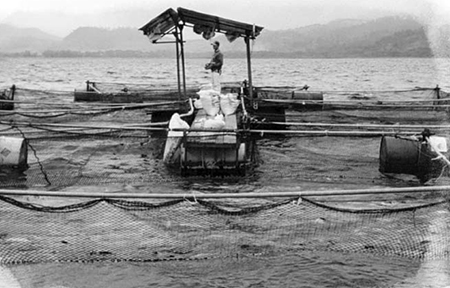
There has been tremendous growth in tilapia culture in Honduras during the past 10 years. The first commercial tilapia farm in Honduras began operation in 1989. For 2002, commercial production of cultured tilapia will reach approximately 10,500 metric tons (MT) (live weight).
About 95 percent of this production comes from two commercial farms that export fresh tilapia fillets to North American markets. The fillets are hand-cut from fish grown to an average weight of 700-1,000 g. The fish are grown at high density in raceways and cages. Several natural and man-made lakes in Honduras presently support the intensive culture of tilapia in cages.
Researchers from the Panamerican Agriculture School have been working with a small cooperative that operates 30 cages for tilapia culture in Honduras. The co-op received technical and financial assistance from an international agency to organize and operate the project. Prior to fish farming, the co-op members were fishermen and coffee producers. Following is a brief description of their cage culture operation.
Culture cages
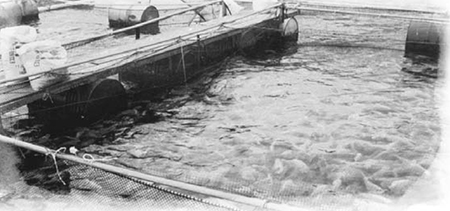
The fish are cultured in cages, or nylon mesh bags, suspended from 6×6-meter metal frames made of welded galvanized pipe. The rectangular frame superstructure includes several 55-gal drums on each side for flotation (Fig. 1). Wooden planks placed over the frame are used as walkways to access each cage. The construction of the 6×6-meter platforms costs approximately U.S. $1,500 each. The frames are joined together in groups of four, with a central platform for feed storage and room for a worker.
The nylon net bags extend in the water to a depth of approximately 2 meters and 0.5 meters above the water surface to avoid fish escapement. This provides a useful cage volume of 70 to 80 cubic meters. The nylon netting costs U.S. $550 per cage.
Cages for fingerlings are covered with netting to prevent predation by birds. Cages containing fish of more than 100 grams are not protected from avian predators. The cages are anchored in the lake at a water depth of approximately 20 meters.
Stocking and grow-out
The cages are stocked with mostly Florida and Jamaica red tilapia. The co-op purchases fingerlings of 5 to 12 grams from an independent producer for U.S. $0.02 to 0.04 each. These small fish are stocked into cages with a 6-mm mesh netting for approximately 60 days.
Upon attaining an average weight of 20 grams, the fish are transferred to cages with a 25-mm mesh for the first phase of fattening at a density of 100 fish per cubic meter. At an average weight of 200 grams, the fish are sorted by size and moved to additional cages, where their stocking density is reduced to approximately 50 fish per cubic meter. The fish remain in these cages until they are harvested.
Feed
Several companies in Honduras produce pelleted feed for tilapia. The local prices for feed containing 28 percent crude protein fluctuate at U.S. $0.37 to 0.41 per kilogram.
The members of the co-op believe it is better to overfeed the fish than underfeed them, so feed is offered to the fish at frequent intervals throughout each day. Feed-conversion ratios average 1.8 to 2.0:1. The fish are ready for harvest at an average weight of 450 grams in seven to eight months. The fish are sold live with no processing, at prices ranging U.S. $2.10 to 2.40 per kilogram.
Production costs
Most commercial fish farmers are reluctant to reveal the prices they pay for inputs and closely guard information on their income from sales of fish and other products. Conversations with the members of the co-op, however, developed information for preparing a representative production budget (Table 1). The cage culture of tilapia in Honduras is a potentially lucrative option for Honduran investors.
Meyer, Partial budget for tilapia cultured in cages in Honduras, Table 1
| Description (unit) | Cost (U.S. $/unit) | Number Units Utilized | Total Value/ kg Live Weight |
|---|---|---|---|
| Costs/kg: | |||
| Fingerlings (each) | 0.03 | 4 | 0.12 |
| Feed (kg) | 0.39 | 2.0 | 0.78 |
| Labor (man-days) | 5.00 | 10/cage/cycle | 0.20 |
| Infrastructure depreciation | 0.10 | ||
| Other equipment (boat) | 0.03 | ||
| Total costs (kg) | 1.23 | ||
| Income from sales (kg) | 2.20 | 2.20 | |
| Profit (income – total cost) | 0.97 | ||
| Benefit (income – total cost/total cost x 100) | 79% |
Markets
Local markets for tilapia in Honduras are expanding. Whole fish and tilapia fillets are now sold at most supermarkets and public markets throughout the country. The two large farms that export fillets to North America also market some of their production domestically.
Environmental concerns
Most criticism of commercial aqua-culture in Latin America has traditionally focused on marine shrimp farming and its possible impact on coastal environments. The intensive management of caged fish creates environmental impacts that may eventually raise questions about the sustainability of this activity in Honduras and elsewhere in Central America. For example, a large cage culture venture planned for Nicaragua has been delayed, in part, to strong resistance from several environmental groups.
Conclusion
The culture of tilapia in cages is well established in Honduras. A functional and profitable protocol, including the design and fabrication of adequate infrastructure and management schemes for rearing the fish, has been developed. Local markets are expanding for whole fish and tilapia fillets. The sustainability of this activity will have to be proven in order to properly manage the natural and man-made lakes used for fish culture.
(Editor’s Note: This article was originally published in the December 2002 print edition of the Global Aquaculture Advocate.)
Now that you've reached the end of the article ...
… please consider supporting GSA’s mission to advance responsible seafood practices through education, advocacy and third-party assurances. The Advocate aims to document the evolution of responsible seafood practices and share the expansive knowledge of our vast network of contributors.
By becoming a Global Seafood Alliance member, you’re ensuring that all of the pre-competitive work we do through member benefits, resources and events can continue. Individual membership costs just $50 a year.
Not a GSA member? Join us.
Author
-
Daniel E. Meyer, Ph.D.
Panamerican Agriculture School
Zamorano, Honduras[110,104,46,117,100,101,46,111,110,97,114,111,109,97,122,64,114,101,121,101,109,100]
Tagged With
Related Posts
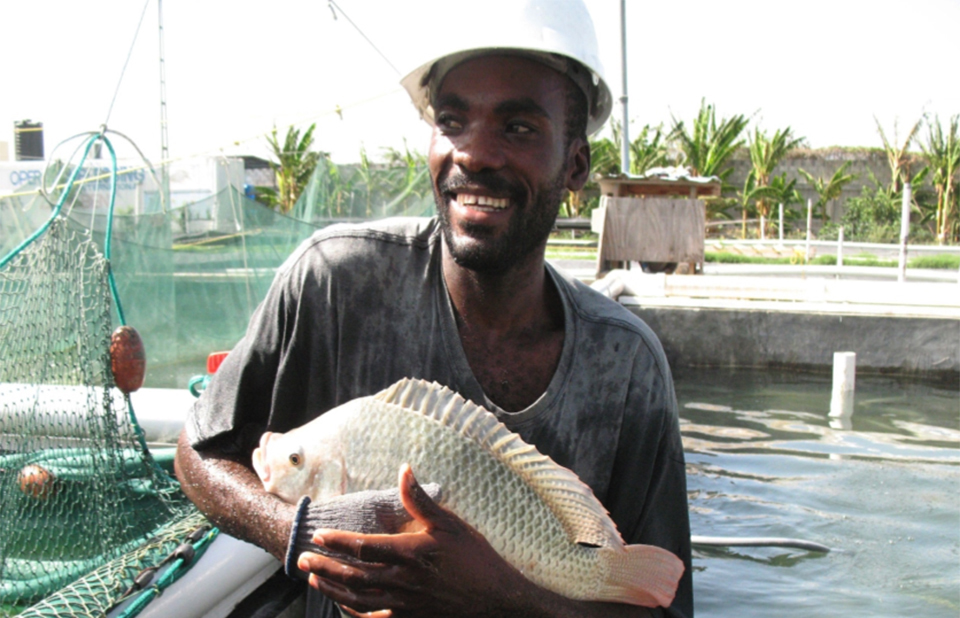
Responsibility
Haiti’s hatchery of hope
Built on a dream of feeding some of the world’s poorest and most vulnerable people, a charity-built tilapia hatchery in Haiti now learns to stand on its own.
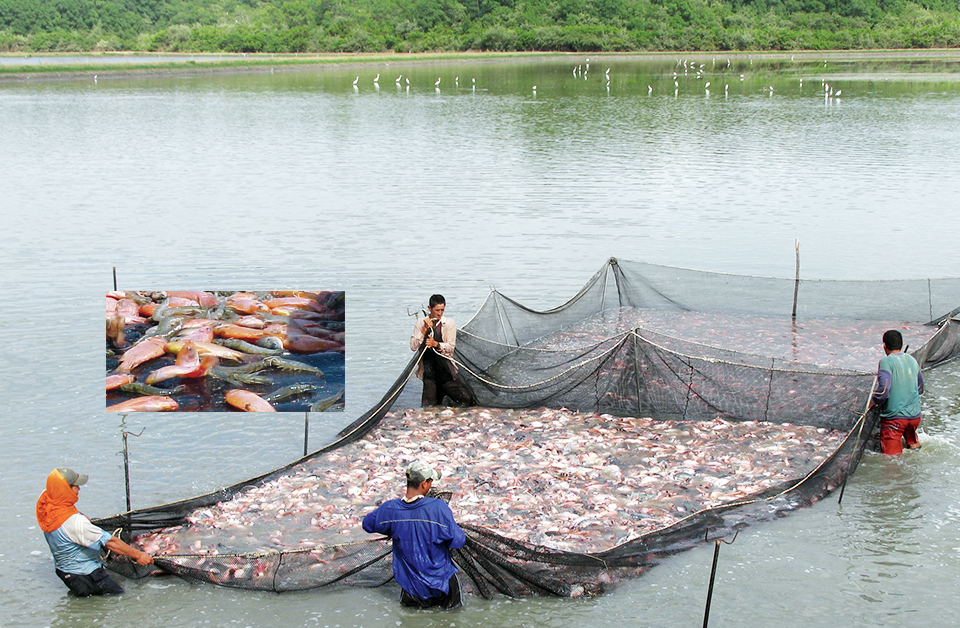
Intelligence
Tilapia culture in Ecuador
Tilapia culture in Ecuador is marked by vertically integrated companies that manufacture their own feeds and practice polyculture with Pacific white shrimp.
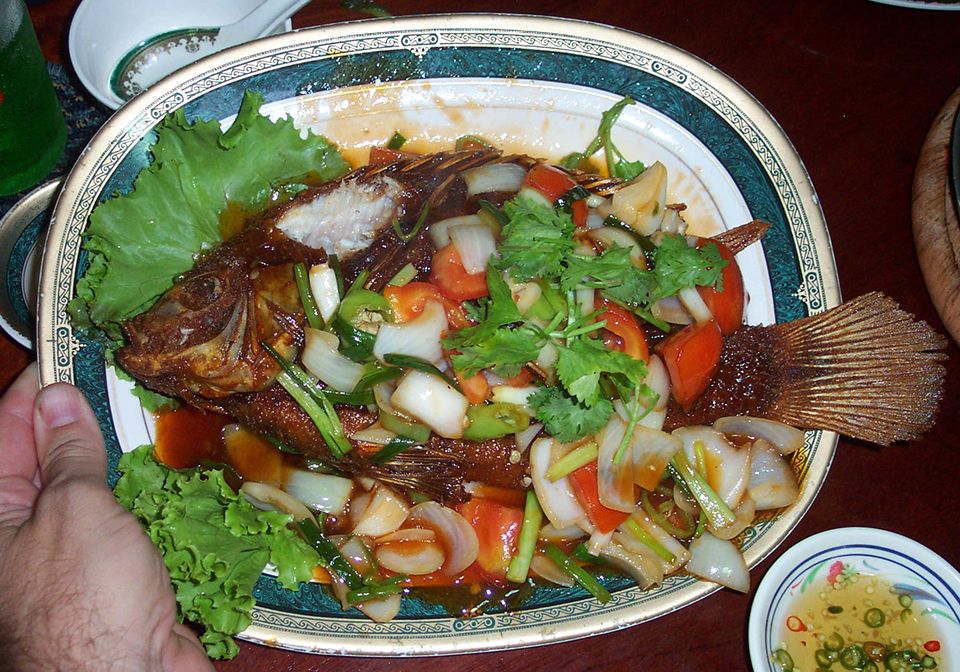
Intelligence
Tilapia: A truly global aquaculture industry
Tilapia are a diverse group of tropical fish with over 100 species that originally came from Africa and the Middle East but now are farmed worldwide.
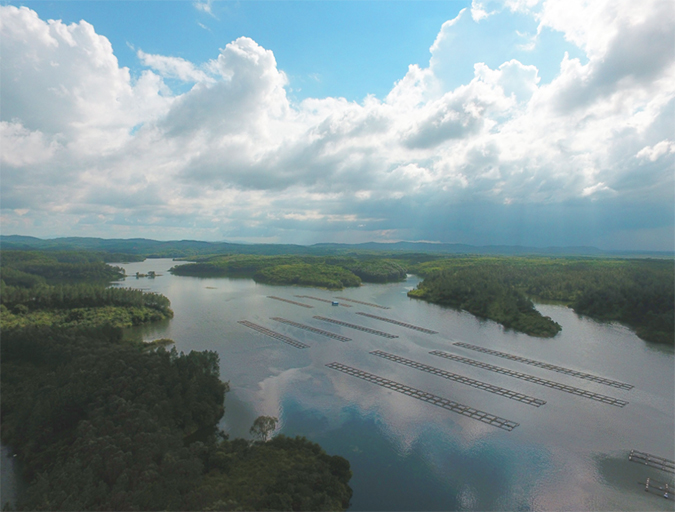
Intelligence
What will it take to make tilapia great again?
Once a darling of the sustainable seafood crowd for its vegetarian diet and potential to feed the world’s growing population, mild-mannered tilapia now has an image problem that may be causing a dip in consumption levels.


